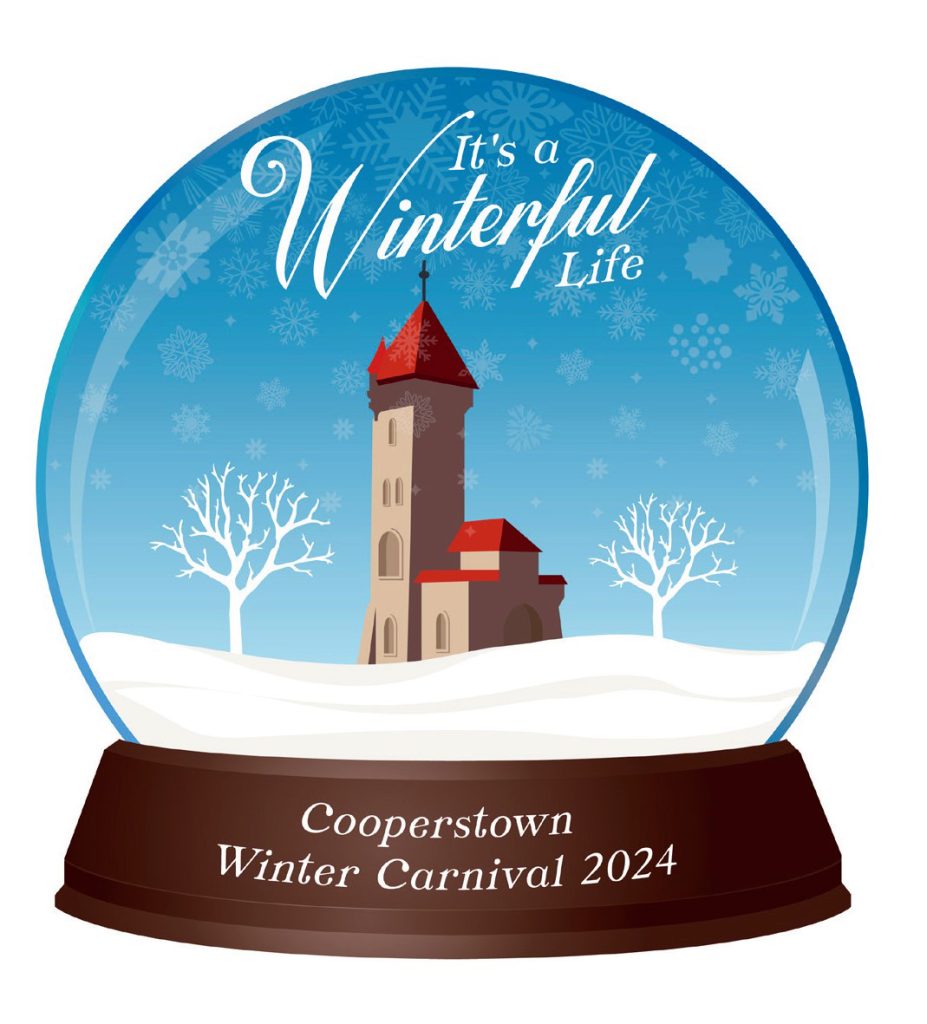Editorial of February 1, 2024
Dancing in the Doldrums

It’s here. Again. This weekend. The Cooperstown Winter Carnival, a classic event that began a long time ago. The powers that be say this one is the 56th, but our meager math puts it, right now in 2024, at 57, in anticipation of a 60th anniversary spree in 2027. One might not have happened, for any number of reasons, but there’s a full, volunteer committee for every year since 1967, and in 1991 the carnival celebrated its Silver Anniversary.
Be that as it may, carnivals—winter festivals, winter carnivals, snow festivals, frost fairs—have been around for a long time. They are especially popular in the wintry countries of the north, where the long, cold, snowy and, in the past, very often severe weather conditions exacerbate the winter doldrums, forcing the residents indoors and offering them no rewarding and stimulating social activity. Most of these winter carnivals have involved traditional winter pursuits such as dog sledding, ice hockey, ice carving, skating, skiing, and snow sculptures; today they are highlighted by feasts, fireworks, and light shows as well.
The earliest recorded such winter fete was in England in the year 695, when the Thames River froze for six weeks and vendors set up their booths on the ice. In 1608, the term Frost Fair appeared, with barbers, pubs, fruit sellers, and shoemakers selling their wares, and football, dancing, and nine-pin bowling providing some entertainment, all on the frozen river. During the Great Frost of 1683-84, the Thames was completely frozen for two months, and the ensuing Frost Fair, the most celebrated, was claimed “a Bacchanalian triumph.” Horse- and coach-racing, ice skating, puppet shows, bullbaiting, football, bowling, sledding, and foxhunting all happened on the ice. Then, in 1814, an elephant crossed the river during what was to be the last Frost Fair. The climate was growing milder, the Thames stopped its London freeze, and what had been known as the Little Ice Age ended its 200-year run.
There are, of course, other carnivals too, held across this country as well as in Canada, China, France, Estonia, Japan, Norway, Russia, Sweden and Estonia. Some are small and local, lasting a weekend or two and appealing to their own community; others are well-known—Mardi Gras, Sundance, and the Venice Carnevale draw spectators and participants from afar; still others are older—Saranac Lake (New York) began 120 years ago. They are pretty much all run by volunteers, focused on the health benefits of the great outdoors, brimming with local camaraderie and organized to put an end to the deep winter doldrums.
The Cooperstown Winter Carnival is no exception. Founded by the Cooperstown Ski Club and the Chamber of Commerce, it once featured sled-dog races (over an 11-mile course on the then-frozen lake, from Pioneer Park to Five Mile Point and back), ski races on the then-snow-filled Mt. Otsego, snowmobile races, car races, and fishing tournaments, also on the then-frozen lake, and all manner of outside activities for young and old, as well as the Susquehanna Ball, held at the then-Fenimore House until 1974. Today the carnival still manages to encourage outside activities, but there are more indoor events—book sales, competitions at the Clark Sports Center, and a plethora of eating, drinking, and shopping opportunities. Perhaps it’s all due to some climate change and the scarcity of snow and ice.
Even so, the carnival is here to cheer us up and remind us that spring is soon coming to rescue us from our long, cold winter.

